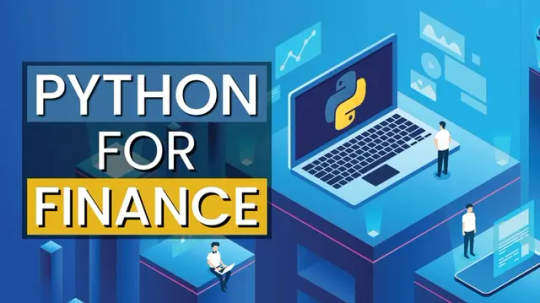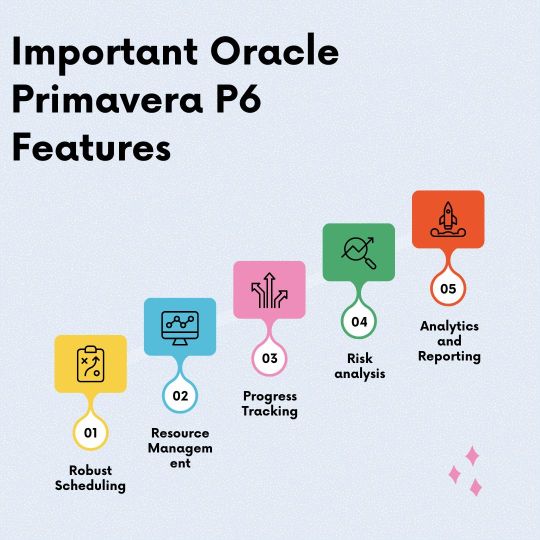#Riskanalysis
Explore tagged Tumblr posts
Text
V-Score: A Novel Metric For Quantum Algorithm Performance

Researchers and scientists are continuously searching for methods and tools that can improve quantum problem-solving abilities in the rapidly changing field of quantum computing. The V-Score is one such invention that is causing a stir in the industry. This cutting-edge measure is revolutionizing the evaluation and optimization of quantum algorithms and advancing the limits of what is feasible in quantum computing.
We will discuss the V-Score‘s definition, operation, and reasons for being heralded as a secret weapon in the field of quantum problem-solving in this extensive post.
What is the V-Score?
A new metric for assessing the efficacy and efficiency of quantum algorithms is the V-Score. To put it simply, it is a quantitative instrument that assesses the performance of a quantum solution in relation to classical techniques. Researchers can better understand how quantum systems can beat traditional computers in tackling complicated problems by using the quantum, which evaluates a number of criteria such processing time, energy consumption, and solution correctness.
The capacity to correct for quantum noise and errors is one of its most notable properties. Despite their immense capacity, quantum systems are still vulnerable to operational mistakes and decoherence, which can compromise the dependability of their solutions. The V-Score aids in measuring these flaws and offers information on how near error-free a quantum solution is.
Why is the V-Score a Game-Changer for Quantum Problem Solving?
The intricacy of quantum problem solving and the enormous amount of computing power needed to solve it are frequently used to characterize the field. Problems that grow exponentially, such molecular simulations, cryptography, and optimization tasks, are difficult for conventional computer systems to handle. This is the area in which quantum computing shines. The difficulty has always been demonstrating that quantum solutions are superior to classical systems in practical applications, particularly in noisy settings.
By providing a consistent benchmark for comparing quantum algorithms to classical ones, the V-Score alters the rules of the game. Researchers may now clearly respond to the question of whether and to what degree quantum solutions are superior in particular situations by employing this metric. Improved assessment of the quantum advantage creates new opportunities in sectors like finance and pharmaceuticals, where more rapid and effective problem-solving may result in ground-breaking breakthroughs.
How Does the V-Score Work?
A number of metrics that measure a quantum algorithm’s performance are used to compute the V-Score, including:
Speed: In comparison to traditional algorithms, how fast does the quantum algorithm tackle the problem?
Precision: Does the precision of the quantum solution equal or exceed that of the classical approaches?
Energy Efficiency: Although the V-Score calculates the exact energy savings in particular situations, quantum computers generally use less energy than conventional systems.
Noise and Error Resilience: This measure takes into consideration how well the quantum system handles quantum noise and mistakes that arise during calculations.
These criteria are combined by the V-Score to create a single score that may be used to compare various quantum algorithms or solutions. A quantum solution with a higher V-Score is more efficient.
Applications of the V-Score in Quantum Computing
In a number of sectors where quantum computing is anticipated to have a revolutionary effect, the V-Score is proving to be an effective instrument. The V-Score is used in the following important areas:
Molecular Simulations and Drug Development
In order to precisely represent complicated molecules and chemical reactions that are challenging for classical systems to model, pharmaceutical companies are using quantum computing. Researchers may expedite the drug development process by using the V-Score to evaluate which quantum algorithms are best at forecasting molecular interactions.
Risk analysis and financial modeling
Quantum computing has the potential to resolve intricate optimization issues pertaining to risk assessment, pricing, and portfolio management in the financial industry. Financial organizations can assess whether quantum algorithms provide a notable edge over classical models in forecasting market movements or portfolio optimization by utilizing the V-Score.
Security and Cryptography
The field of cryptography faces both opportunities and risks due to quantum computing. They can develop new, quantum-resistant encryption protocols in addition to breaking conventional encryption techniques. By assessing the security strength of quantum encryption techniques, the V-Score makes sure that they are resilient enough to resist potential quantum assaults.
Machine learning and artificial intelligence
It is anticipated that quantum computing would transform AI and machine learning by improving the capacity to handle enormous volumes of data and identify patterns more quickly. AI researchers can improve the efficiency of their quantum-powered models by using the V-Score to assess how well quantum algorithms perform in model training and prediction.
The Future of the V-Score in Quantum Computing
The V-Score will become more and more significant in determining how problems are solved in a variety of industries as quantum computing develops. It makes it possible to assess quantum advantage precisely, which is essential for demonstrating the long-term sustainability and superiority of quantum solutions over classical techniques.
It is may anticipate that will continue to develop and improve, possibly incorporating new metrics that assess the efficiency of multi-qubit interactions, error correction, and quantum annealing. The V-Score will continue to be the standard metric for evaluating the performance of quantum computing with this development.
In conclusion
The V-Score is quickly emerging as a vital tool for tackling quantum problems. For scientists and business executives hoping to fully utilize quantum computing, its capacity to assess how well quantum algorithms perform in comparison to traditional methods makes it indispensable. As this field develops, will remain essential in spurring innovation, opening up new avenues in sectors like healthcare and finance, and assisting in the resolution of some of the most difficult problems facing humanity.
Read more on govindhtech.com
#VScore#NovelMetric#quantumcomputing#game#QuantumAlgorithmPerformance#AI#Security#Cryptography#machinelearning#artificialintelligence#financialmodeling#Riskanalysis#DrugDevelopment#GameChanger#technology#technews#news#govindhtech
2 notes
·
View notes
Text
quantitative Techniques
Quantitative techniques involve mathematical and statistical methods used for decision-making, problem-solving, and data analysis in business and research. Common techniques include linear programming, probability analysis, forecasting, and statistical modeling, helping organizations make data-driven and efficient decisions.

0 notes
Text

Discover why top portfolio management services depend on wealth management firms for expert financial planning, investment strategies, and long-term growth.
#PortfolioMgmt#WealthMgmt#InvestmentPlan#FinancialGrowth#AssetManage#RiskAnalysis#MarketTrends#FundAllocation#WealthAdvisory#ROITracking#MoneyManage#StockInvest#CapitalGrowth#EquityFunds#FinanceTips#MutualFunds#SmartInvest#WealthStrategy#AssetGrowth#FinancialPlan
0 notes
Text
Data Storytelling for Risk Management: Turning Insights into Action

Enhance risk management with data storytelling transform complex risk data into clear, compelling narratives that drive better decisions. By combining analytics with storytelling techniques, organizations can identify threats, communicate risks effectively, and take proactive measures. Discover how data storytelling improves transparency, fosters stakeholder engagement, and strengthens resilience in an ever-evolving risk landscape. Empower your team with actionable insights through the power of storytelling. For more info: https://www.datastoryhub.ai/data-storytelling-for-risk-management/
#DataStorytelling#RiskManagement#DataDrivenDecisions#BusinessInsights#RiskAnalysis#DataVisualization#StorytellingWithData#EnterpriseRisk#DecisionMaking#AIForRisk#DataAnalytics#RiskMitigation#BusinessStrategy#PredictiveAnalytics#DataCommunication
0 notes
Text
#nancialRiskManagement#RiskAnalysis#InvestmentRisk#BankingSector#FinancialServices#RiskAssessment#FinancialPlanning#InvestmentStrategy#CorporateFinance#FinTech#إدارة_المخاطر_المالية#تحليل_المخاطر#المخاطر_المالية#التخطيط_المالي#التمويل#الأسواق_المالية#استثمار#القطاع_المصرفي#تطوير_الأعمال#ريادة_الأعمال
0 notes
Text
9 Reasons Why Skydiving Is Safer Than Driving
Considering skydiving to check off a bucket list item? While friends and family may be worried, you've heard it's safer than driving. Is that true?
Read the article here: https://enjoyfreefall.com/9-reasons-why-skydiving-is-safer-than-driving/

#Skydiving#SkydivingSafety#ExtremeSports#AdventureSports#SaferThanDriving#SkydivingVsDriving#RiskAnalysis#SafetyFirst#BucketList#ThrillSeeker#AdrenalineRush#DareToJump#EnjoyFreeFall
0 notes
Text
Python in Finance: From Risk Analysis to Stock Predictions
Introduction
The financial world is rapidly evolving, with technology playing an integral role in shaping its future. Python, a versatile and powerful programming language, has emerged as a favourite among finance professionals for its ease of use and extensive libraries. From analyzing financial risks to predicting stock market trends, Python empowers professionals to make data-driven decisions efficiently. This blog explores how Python is transforming the finance sector, with practical applications ranging from risk management to algorithmic trading.

How Python is Used in Finance
Risk Analysis
Data Visualization: Python libraries like Matplotlib and Seaborn are used to create compelling visualizations, enabling better insights into potential risks.
Risk Modeling: Libraries such as NumPy and Pandas help in creating stochastic models and performing Monte Carlo simulations for risk assessment.
Stress Testing: Python is employed to simulate worst-case scenarios, allowing firms to prepare for adverse financial conditions.
2. Stock Market Predictions
Time-Series Analysis: Python excels in analyzing historical stock data using libraries like Statsmodels and Pandas.
Machine Learning Models: With libraries such as Scikit-learn and TensorFlow, Python is used to create predictive models for stock price movements.
Sentiment Analysis: NLP tools like NLTK and spaCy help analyze public sentiment from news articles and social media to gauge market trends.
3. Algorithmic Trading
Python enables the development of automated trading bots that execute trades based on predefined strategies. Libraries like Zipline and Backtrader are popular choices for this purpose.
4. Portfolio Optimization
Python's optimization libraries, such as SciPy and PyPortfolioOpt, assist in constructing optimal investment portfolios by balancing risk and returns.
Why Python is the Ideal Choice for Finance
Ease of Use: Python's syntax is intuitive and easy to learn, making it accessible even to non-programmers.
Extensive Libraries: Its robust ecosystem of libraries caters specifically to financial tasks.
Integration: Python integrates seamlessly with other tools and databases commonly used in finance.
Community Support: A vast community ensures that there’s ample documentation and support for tackling challenges.
Challenges in Using Python in Finance
While Python offers immense benefits, challenges like processing large-scale financial data in real-time and ensuring the security of applications must be addressed. Leveraging cloud computing and secure coding practices can mitigate these issues.
Conclusion
Python's impact on the finance industry is undeniable, offering solutions that are both innovative and practical. From mitigating risks to forecasting market trends, Python empowers professionals to stay ahead in the dynamic financial landscape. Its simplicity and versatility make it an ideal tool not just for seasoned professionals but also for beginners looking to break into the world of finance and technology. Learning Python is an excellent starting point for anyone interested in leveraging data-driven insights to make smarter financial decisions. As the language continues to evolve, its relevance in finance is set to grow, making it a must-learn for aspiring financial analysts and tech enthusiasts alike.
0 notes
Text
Project management estimation techniques help in forecasting the time, cost, and resources required to complete a project. Different techniques are used depending on the complexity, available data, and phase of the project. Below is a comparison of common estimation techniques in project management, covering their methods, strengths, and weaknesses.
#AnalogousEstimation#ParametricEstimation#BottomUpEstimation#ThreePointEstimation#PERT#ExpertJudgment#HeuristicEstimation#MonteCarloSimulation#DelphiTechnique#ProjectEstimationComparison#EstimationAccuracy#RiskAnalysis#TopDownEstimation#DetailedPlanning#EstimationTechniques#ProjectManagementEstimation
0 notes
Text
Oracle Primavera P6 Project Management: A Comprehensive Guide
First of all,
Accuracy and productivity are critical in the field of project management. Professionals need reliable technologies that maximize resources, streamline procedures, and guarantee project success to manage the complexity of today's projects. In project management software, Oracle Primavera P6 Training is a towering example of quality, providing an extensive feature set specifically designed to satisfy the needs of a wide range of sectors. We explore the features, advantages, and significance of Primavera P6 training for aspiring project managers as we delve into the world of Oracle Primavera P6 in this blog.
Gratitude Oracle Primavera P6: Designed to make project planning, scheduling, execution, and control easier, Oracle Primavera P6 is an effective project management solution. Primavera P6 Classes, well-known for their adaptability and scalability, can handle projects of any size or complexity and give project managers the tools they need to manage resources, monitor progress, and reduce risks efficiently.
Important Oracle Primavera P6 Features:
Robust Scheduling: With Primavera P6 Course, users may precisely design project schedules that include tasks, milestones, and dependencies.
Resource Management: The program makes it possible to allocate and optimize resources effectively, guaranteeing their best use and financial viability.

Progress Tracking: Primavera P6 allows project managers to track project progress in real-time, which helps with timely interventions and well-informed decision-making.
Risk analysis: Project teams may foresee and proactively handle possible difficulties with the support of Primavera P6 Training, which provides advanced capabilities for risk assessment and mitigation.
Analytics and Reporting: With the software's extensive reporting features, stakeholders can learn about project performance, trends, and deviations.
The Value of Oracle Primavera P6 Training: Although Oracle Primavera P6 Course has many strong features, using them to their fullest potential calls for skill and knowledge. Professionals may increase productivity and ensure project success by gaining the knowledge and abilities to use Primavera P6 efficiently. Individuals get hands-on experience with Primavera P6 through structured courses, where they understand key topics like:
Configuring and setting up the project
Planning and optimizing schedules
Allocating resources and achieving parity
Monitoring and reporting on progress
Analysis and management of risks
Combination with additional project management software
Primavera P6 training programs include beginner, intermediate, and advanced courses that are customized to specific jobs and industry requirements, catering to professionals with varying skill levels. Primavera P6 training offers a strong foundation for success, giving you the know-how to take on projects with assurance and effectiveness, regardless of your experience level or desire to enter the sector.
Primavera P6 Classes:
Selecting the Appropriate Match: Selecting the appropriate learning path that corresponds with your objectives and desires is crucial when starting your Primavera P6 Course adventure. Seek respectable organisations or training providers that provide thorough Primavera P6 courses taught by qualified teachers. Take into account elements like the course curriculum, length, accreditation, and the mode of delivery (online or in person).
Additionally, look for training courses that use interactive exercises, case studies, and simulations to provide students with real-world, hands-on exposure to Primavera P6. A comprehensive learning experience is ensured by combining theoretical knowledge with practical application, which helps you efficiently transfer concepts into real-world project circumstances.
In conclusion, Oracle Primavera P6 Training is a key component of contemporary project management, enabling enterprises to accomplish their goals with accuracy and effectiveness. Professionals can maximize the capabilities of Primavera P6 and acquire the knowledge and abilities required to succeed in project management by investing in Primavera P6 training. Primavera P6 training opens the door to project management excellence, whether your goal is to advance your professional prospects or propel organizational success.
#OraclePrimaveraP6#ProjectManagement#PrimaveraP6Training#PrimaveraP6Course#ProjectScheduling#ResourceManagement#RiskAnalysis#ProgressTracking
0 notes
Text
Master Risk Management Understand the Risk Breakdown Structure
Discover the significance of a Risk Breakdown Structure in effective risk management. Learn its key components, benefits, and implementation strategies. Enhance your risk analysis skills today!

0 notes
Text
#EnergyInvesting#PredictiveAnalytics#SecurityInInvestment#AIEnabled#RiskAnalysis#Encryption#MultiFactorAuthentication#ThreatDetection
0 notes
Text
Master Risk Analysis with David Kenik: Your Path to Strategic Security
In today's ever-changing world, understanding and managing risks are crucial for success and security. Introducing David Kenik, your trusted expert in risk analysis and strategic security solutions. With years of experience and unmatched expertise, David Kenik is a renowned name in the field of risk management.
Unlock the Power of Risk Analysis:
David Kenik empowers individuals and businesses to navigate uncertain landscapes with confidence. His cutting-edge risk analysis techniques provide invaluable insights, enabling you to make informed decisions and mitigate potential threats effectively. Whether you're a business owner, investor, or individual seeking personal security, David Kenik's strategies are tailored to meet your specific needs.

Comprehensive Risk Management Solutions:
David Kenik specializes in delivering comprehensive risk management solutions that encompass various sectors, including finance, technology, and personal security. His proven methodologies and innovative approaches ensure that you stay one step ahead of potential risks, allowing you to focus on your goals without unnecessary worry.
Why Choose David Kenik?
Expert Guidance: Benefit from David Kenik's extensive knowledge and practical expertise in risk analysis.
Customized Strategies: Receive personalized risk management strategies tailored to your unique requirements.
Proactive Approach: Stay proactive in identifying and addressing potential risks before they escalate.
Peace of Mind: Gain peace of mind knowing you are equipped with the best tools to safeguard your interests.
Take Control of Your Future:
Don't let uncertainties hold you back. Embrace the power of strategic security with David Kenik's unparalleled guidance. Whether you're a professional seeking career advancement or a business owner safeguarding your investments, David Kenik's risk analysis solutions are your pathway to a secure and prosperous future.
Contact David Kenik Today:
Ready to elevate your risk analysis game? Contact David Kenik now and embark on a journey towards strategic security and unparalleled success. Secure your tomorrow with expert guidance today!
0 notes
Text
Why the Top Portfolio Management Services Rely on Wealth Management Firms
Wealth management corporations stand at the center of monetary success for people and organizations navigating the latest complicated investment panorama. Behind every nicely structured portfolio lies an advanced environment of expertise that is going far beyond simple funding selection. This complexity explains why top portfolio management services always form strategic partnerships with set-up wealth management firms rather than trying to build comprehensive monetary solutions independently.
The Expertise Gap That Only Specialized Knowledge Can Fill
Financial markets do not reward generalists. The elaborate dance among worldwide economic forces, quarter-precise developments, and individual protection overall performance calls for committed professionals who live and breathe economic evaluation. Wealth management companies cultivate teams of specialists with numerous backgrounds—from macroeconomics to sector-particular know-how in technology, healthcare, electricity, and the past.
When a patron techniques a portfolio management provider with complicated needs—perhaps an enterprise proprietor trying to diversify holdings whilst making plans for succession—these offerings depend on wealth control groups to provide the multidisciplinary understanding necessary for holistic answers.
Access to Exclusive Investment Opportunities
Perhaps the most compelling motive that top portfolio management services align with wealth control companies is access. Appealing funding opportunities mostly aren't normally available to absolutely everyone. Private equity offers, pre-IPO investments, and exclusive actual property traits frequently come with high minimum investments and require set-up relationships.
A wealth management enterprise leverages its institutional connections and patron network to advantage preferential admission to those opportunities. Portfolio control services virtually can't mirror those advantages independently, which explains why they shape strategic partnerships as opposed to competing directly.
Risk Management Beyond Simple Diversification
Market volatility can quickly erase years of investment profits. Top portfolio control offerings recognize that state-of-the-art chance management calls for more than primary asset allocation. Wealth control companies appoint quantitative analysts who construct proprietary threat models that may pressure-take a look at portfolios towards eventualities starting from hobby rate spikes to geopolitical disruptions.
These risk control frameworks constitute years of development and highbrow capital that portfolio services in reality can't increase independently. By partnering with a wealth control company, portfolio managers benefit access to institutional-grade risk assessment tools that help shield patron assets in the course of marketplace turbulence.
Tax Efficiency as a Performance Enhancer
Performance isn't always just about what you earn—it's approximately what you maintain. Sophisticated tax strategies can dramatically improve after-tax returns, once in a while more drastically than funding selection itself. Wealth control firms preserve specialized tax information that transforms investment selections from in simple terms return-targeted to tax-optimized implementations.
Technology Integration and Operational Excellence
Building and retaining contemporary funding technology requires full-size sources. Top portfolio control services an increasing number of apprehend that partnering with wealth management firms gives get admission to state-of-the-art technology platforms without the related development costs.
The Human Element: Behavioral Coaching
Even perfectly designed portfolios can fail when human emotion enters the equation. Market downturns trigger powerful mental responses that may result in bad selection-making. Wealth control companies offer portfolio managers frameworks for behavioral training that help clients stick to long-term strategies at some stage in hard markets.
This emotional intelligence issue separates sincerely fantastic wealth management from algorithmic methods. Top portfolio control offerings fee this human detail that wealth management businesses cultivate through years of customer enjoyment across multiple marketplace cycles.
The Future of Financial Partnership
As economic complexity increases, the partnership among top portfolio control offerings and wealth control corporations will probable support similarly. Regulatory changes, evolving tax codes, and more and more state-of-the-art customer wishes create an environment where specialized knowledge provides tangible advantages.
For investors searching for complete economic solutions and expertise, this symbiotic relationship enables giving an explanation for why the most successful portfolio management frequently takes place in the context of a broader wealth management method.
#PortfolioMgmt#WealthMgmt#InvestmentPlan#FinancialGrowth#AssetManage#RiskAnalysis#MarketTrends#FundAllocation#WealthAdvisory#ROITracking#MoneyManage#StockInvest#CapitalGrowth#EquityFunds#FinanceTips#MutualFunds#SmartInvest#WealthStrategy#AssetGrowth#FinancialPlan
0 notes
Text
"Take Control of Your Trading Journey with ChartBuddy: Unlocking Reliable Buy/Sell Signals and Advanced Chart Analysis." . . .
Follow + Like + Share + Comment
Follow us for daily tips and setups Turn on post notifications
Follow for more update @chartbuddyofficial
#forex#stockmarket#nifty#bitcoins#crypto#technicalanalysis#tradingcards#tradingtips#tradingmemes#forextrading#success#business#bullishtrend#chartanalysis#stoploss#traders#trademarketing#sharemarket#riskmanagement#riskanalysis#financialgrowth#startupindia#sensex#explorepage#chartbuddyofficial#investing#trader#forextrader#money#stocks
0 notes
Text
Great Referral Offer
Refer a friend for NEBOSH IGC E-learning & Get 2 International HSE Courses Absolutely FREE!

Share the knowledge and earn rewards! Boost your friend's career with NEBOSH IGC E-learning! Receive 2 International HSE Courses for FREE as a token of our appreciation! Expand your HSE knowledge together and embark on a journey towards success!
Start referring now and take advantage of this special offer! Contact us: Ms. Aswathi s Nair |+91 8089011469 /+44 7787862086 |[email protected] Visit us:
#GreenWorldGroup#safetyofficer#safetymanager#safetyadvisor#ehsmanager#ehsspecialist#healthandsafety#safetyprofessionals#safetycourse#riskanalysis#safetyawareness#hsetraining#HSE#neboshcourse#NEBOSH_Gold_Learning_Partner#occupationalhealthandsafety#safetycourses#safetyconsulting#safetyinstitute#neboshinstitute#NEBOSHIDip#neboshidiponline
0 notes
Text
0 notes